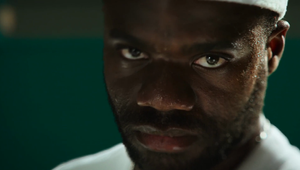
Spring Into Change: The Psychology Behind Setting Springtime Goals to Boost Success

Image source: Jenny Walsh via Unsplash
Research shows that 90% of businesses fail to achieve their strategic goals, but why does this happen? Cowry Consulting’s Letitia Leong explains how business leaders and marketers alike can use behavioural science, and the change of the seasons, to hack your business goals.
January is often traditionally seen as the time to set new goals and plans, but the start of the year is not the most conducive moment for strategic thinking: it often brings short, dark days, low energy levels following the holiday break, and, for some, the effects of seasonal affective disorder - all of which can make it challenging to set and pursue meaningful objectives.
Spring presents a more natural and energising opportunity to review, reset, and realign organisational goals. With its natural associations of renewal and growth, spring offers the ideal environment to refocus efforts and lay the groundwork for more intentional, impactful progress.
With longer days and more sunlight, spring offers an ideal time to set goals. Researchers have found that people are more motivated to pursue goals following a temporal landmark like the beginning of a quarter, fiscal year, or seasonal change — known as the fresh start effect.
Spring offers a midpoint in the year for reflection and adjustment. It aligns with many organisational planning cycles, such as Q1 reviews or mid-year strategy sessions, making it an ideal time to recalibrate goals. The seasonal shift towards more daylight and increased optimism can also improve morale, boost creativity, and strengthen commitment to team objectives.
How can behavioural science help goals stick?
Research shows that 90% of businesses fail to achieve their strategic goals, often due to poor implementation and a lack of organisational buy-in. Behavioural science offers valuable insights into why this happens:
- Optimism bias leads us to overestimate how easily goals can be achieved, while downplaying potential roadblocks.
- Present bias makes us prioritise short-term wins over long-term progress.
- The intention-action gap highlights the disconnect between setting ambitious goals and taking the practical steps needed to reach them.
Understanding these cognitive biases is essential for setting more realistic, achievable goals - and for building the structures and habits that help teams turn intention into action, and strategy into results.
Setting goals is one thing - getting people to follow through is another. While SMART goals provide a helpful starting point, behavioural science offers practical tools that drive meaningful, lasting change.
One standout framework is Fogg’s B-MAP model, which explains that for a behaviour to happen, three elements must be present:
B = Motivation + Ability + Prompt.
Essentially, people will only do something when they really want to (motivation), they can do it easily (ability), and something reminds them to do it (prompt).
This model is helpful for organisations because it shows how to shape goals and actions in ways that people are more likely to follow through on.
From goal-setting to habit-building
Once goals are set, embedding new behaviours is key. Here are two behavioural science strategies that can help:
1. Habit Stacking
This technique involves linking a new behaviour to an existing habit, making it easier to adopt. For example, to foster a culture of recognition, you might introduce team shout-outs during weekly project updates. The key is to start small and stay consistent. By attaching new habits to existing routines, they become part of the organisational fabric.
2. Commitment Devices
These are tools that increase accountability and help people follow through. They can take many forms - social pressure, friction, or even financial stakes. For example, if your team sets a goal to boost lead generation by 25% in the next quarter, publicly committing to specific targets in weekly meetings can create shared accountability and urgency. When progress is being tracked by peers, there’s more drive to stay on course.
Spring isn’t just about a change in the weather - it’s a strategic opportunity for organisations to pause, reflect, and realign. By leveraging behavioural science insights, aligning goals with models like B-MAP, and using proven techniques such as habit stacking and commitment devices, leadership teams can create goals that not only sound good on paper - but actually drive results.















